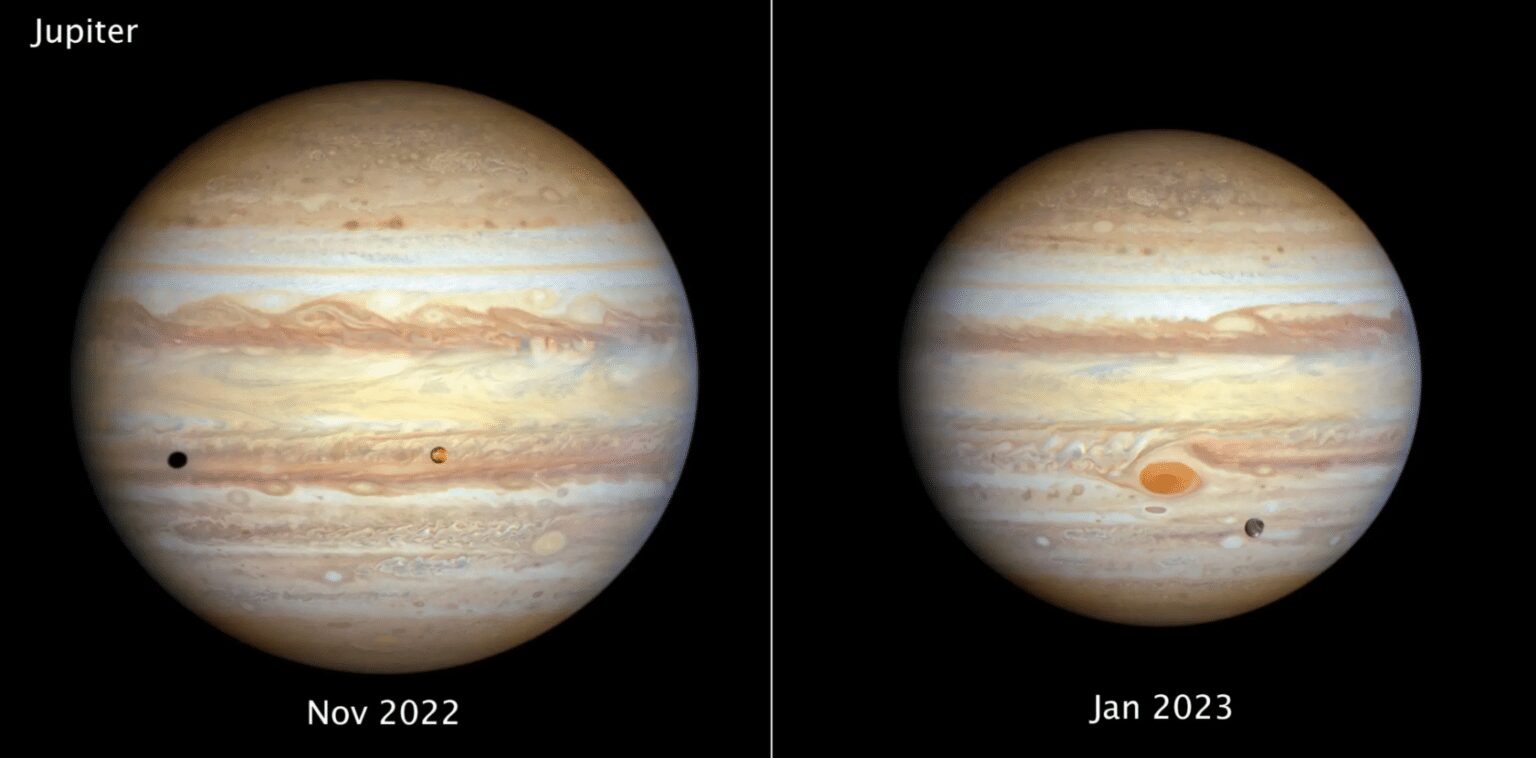The planets orbiting the Sun beyond Mars are not rocky, solid worlds that affect the weather on those planets like the way they do here on Earth. The sunlight reaching those planets affects the circulation of the atmosphere much less. But still, those planets’ weather and climatic conditions are always changing and the Hubble Space Telescope as an Interplanetary Metrologist is recording and transmitting the data back to the Earth giving us information about those planets’ weather.
Jupiter’s weather is directed from the inside out because the heat received by the sun is much less than the heat generated from Jupiter’s interior. This gives rise to the color change cycles of the planets’ alternating cyclones and anti-cyclones. The Season cycles of Uranus move at a very slow rate due to the fact that it takes 84 years for Uranus to orbit around the sun, on top of that the seasons on Uranus are very extreme because Uranus is tipped on its side. Hubble observes a growing polar cap haze that looks similar to the smog over cities of the earth as the summer approaches in the northern hemisphere of the planet.
Hubble keeps a keen eye on Giant Gas Planets
Ever since Hubble launched in 1990, it has had an eye on the gaseous planets of the solar system and their climatic and weather conditions. Many of NASA’s missions to those planets have given them a closer look at the atmosphere but due to the Hubble’s sensitivity and sharpness of its instruments on board, it makes keen and unblinking observations of those planets’ weather.
This very advantage of Hubble complements the observations taken from probes that had been sent to those planets to make observations like JUNO which is currently orbiting Jupiter and Cassini which was a probe sent to make observations on Saturn and now retired and the voyager 1 and 2 probes the flew by all the four giant planets between 1979 and 1989. A program called Outer planet Atmosphere Legacy (OPAL) was inaugurated in the year 2014 to make observations of the four giant planets.
Jupiter Observations

The image above shows pictures taken by Hubble Space Telescope, the one on the left was taken on November 12, 2022, and the one on the right was taken on January 6, 2024.
Left picture: At low northern latitudes the forecast for Jupiter is stormy weather. As some Planetary astronomers like to call it, a ‘Vortex Sheet’ is being formed that consists of highlighting strings of alternating storms. This is a wave pattern caused by cyclones and anti-cyclones locked in a machine with alternating clockwise and counter-clockwise motion. If ever storms get close to each other, then if an event of merger happens between these storms that are very unlikely then, their size will become even larger potentially rivaling the Great Red spot’s current size. The pattern of Cyclones and Anti Cyclones does not allow individual storms from crashing into each other and merging into a larger storm.
Activity within these storms has also been observed, Hubble didn’t make any observations giving yield the result that built-in thunderstorms were not occurring in those cyclones and anti-cyclones, but in the last decade cyclones and anticyclones with thunderstorms have sprung up. Different cloud heights and depths have been observed due to the color changes Hubble is observing. Jupiter’s moon Io is seen in the image.
Right Picture: The most prominent feature in this picture of Jupiter is the Great Red Spot. The storm named the Great Red Spot is a vortex big enough to swallow the whole earth, but the vortex has shrunk in its size over years and has been the smallest it has ever been comparing the images from the observation record over the past 150 years.
Jupiter’s Icy Moon Ganymede is seen transiting Jupiter in the lower right. It is slightly larger than the planet Mercury making it the Largest Moon in the entire solar system. Ganymede is a cratered world with a surface made of water and ice with apparent Glacial flows that are caused by the internal heat of Ganymede. This picture has a smaller size because Jupiter was 81,000 miles farther from Earth when this observation was made.
Read More: Hubble Records Seasons Changing on Jupiter













